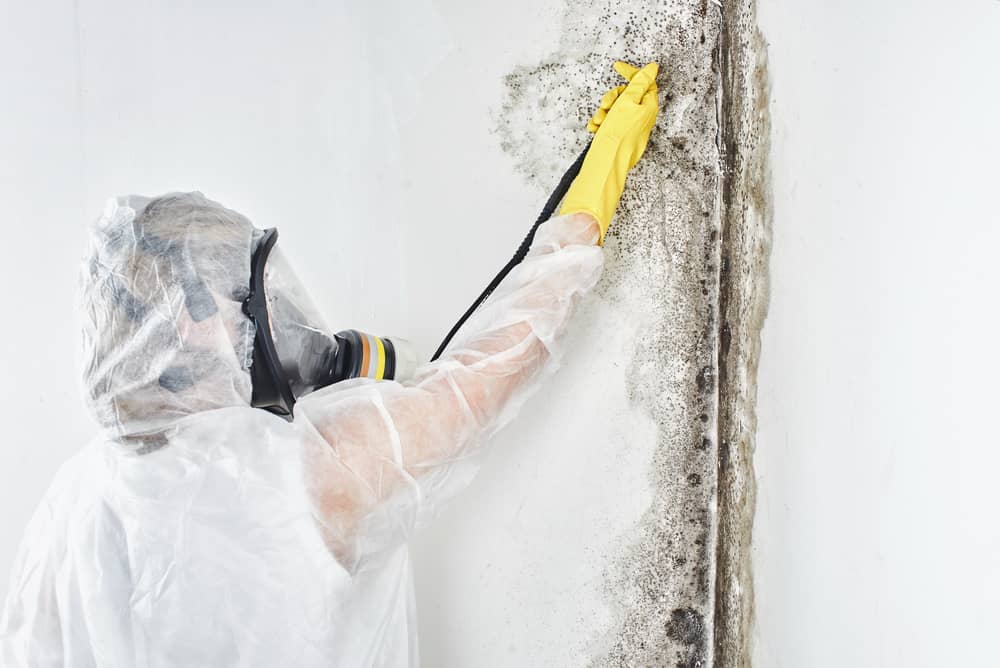
What Causes Mold?
Moisture sources in controlled/built environments are most commonly from leaks, moisture intrusion through walls/foundations, high humidity levels etc.
Molds can grow anywhere if the following primary conditions exist :
• Water or Moisture – if mold was a building, water/moisture would be the foundation, without it, you will not have molds growing and it is one of the four conditions that can be controlled. Bottom line, if you have mold you
have a moisture issue.
• Mold spores must first be present in the area.
• Mold needs a food source such as wood, drywall, the paper part of insulation, skin cell fragments, cardboard, carpet, paper, etc.
• Temperature is a variable as molds can grow dormant when the temperature is out of range for required growth and then.
What is Mold?
The scary word is “black mold”. To be honest, there is no such thing, yes there are many molds that are black in color, but also white, purple, and gray etc.
You don’t know what you have until it is tested. Mold is a broad-spectrum term to describe fungi, mushrooms, rusts, mildew, and yeast. Mold has been around for millions of years and there are few places where mold is not present. Mold spores can be found everywhere, indoors and outside. Many think it may just be found in “old” or “abandoned” homes, but newer homes and buildings are more susceptible to mold problems due to tighter building envelopes creating ideal environments for mold to grow.
From EPA.gov :
“Molds produce tiny spores to reproduce. Mold spores waft through the indoor and outdoor air continually. When mold spores land on a damp spot indoors, they may begin growing and digesting whatever they are growing on in order to survive.
There are molds that can grow on wood, paper, carpet, and food. When excessive moisture or water accumulates indoors, mold growth will often occur, particularly if the moisture problem remains undiscovered or unaddressed. There is no practical way to eliminate all mold and mold spores in the indoor environment; the way to control indoor mold growth is to control moisture.”
The general rule is that mold levels should always be higher outside a living space. When elevated mold levels are found inside a building as compared to outside levels, the general consensus is there is a mold problem and that is where we can help.
Health Impacts
The scary word is “black mold”. To be honest, there is no such thing, yes there are many molds that are black.
Approximately 100 types of mold are considered hazardous and affect humans through inhalation of spores. Mold can cause health issues to varying degrees depending on the type of mold, concentration, exposure duration, and the individual. Everyone is affected differently.
Exposure has been blamed for headaches, nasal irritation, dizziness, nausea, and fatigue. Chronic exposure to large airborne concentrations of spores can induce allergy or hypersensitivity in certain individuals. Chronic exposure to fungal spores can sometimes result in a flu-like debilitating disease known as hypersensitivity.
Remediation
Every situation is different as per the remediation. After consultation, we will compose the most practical and cost-effective process possible and submit a proposal for you to review. We do not have a sales team so you will have a no hassle experience.
Here are a few things to keep in mind :
• The most critical issue is finding the problem causing the mold. Mold should not be remediated until the
water source that contributed to the mold growth is found and remediated, otherwise the mold will return.
• Our remediation process is performed under controlled conditions using negative air machines, HEPA vacs, and the use of Personnel Protective Equipment (PPE).
• Running a dehumidifier in a basement or installing a new attic fan with a humidistat is helpful but may not solve the problem.
• Currently there are no Federal standards for mold testing & remediation. Firms experienced in mold testing and remediation are trained in Standard Operating Procedures (SOPs) that have been established by various organizations and protocols put forth by the EPA.